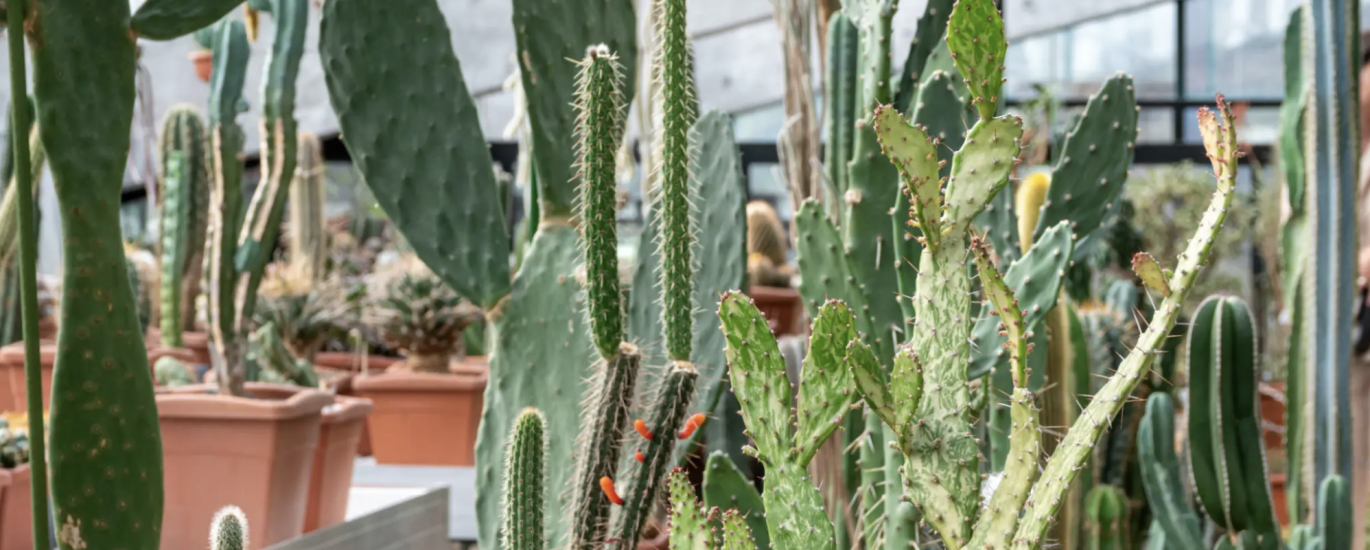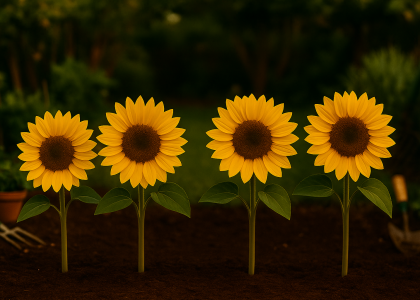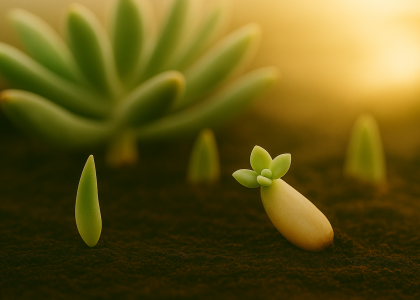Cactus Types Explained: A Beginner’s Guide to Nature’s Most Unique Plant Shapes
Why Cactus Types Matter
Not all cacti are created equal. From towering giants to tiny rock-huggers, the cactus family (Cactaceae) includes over 1,700 species, each with its own vibe, care needs, and decorative value.
Whether you’re choosing a cactus for your sunny desk, your minimalist hallway, or a dry garden bed, knowing the different types can help you pick the perfect prickly companion.

Discover Columnar, Globular, Trailing & More – Which Cactus Suits Your Space and Style?
1. Columnar Cacti
Keywords: tall cactus types, indoor statement plants
What they look like: Tall, upright, pillar-shaped stems, often heavily ribbed and spiny.
Popular genera: Cereus, Carnegiea (Saguaro), Cephalocereus (Old Man Cactus)
Best for:
- Minimalist interiors
- Open spaces that need height or texture
- Creating desert-style floor plant corners
Design tip: Use as a dramatic accent in terracotta planters with white stone mulch.
2. Globular or Ball Cacti
Keywords: ball cactus, small cactus for desk, spherical cacti
What they look like: Compact, round or barrel-shaped with symmetrical spines.
Popular genera: Echinocactus (Golden Barrel), Astrophytum (Bishop’s Cap), Rebutia
Best for:
- Tabletops, shelves, and windowsills
- Terrariums and gift pots
- Small-space homes
Design tip: Arrange 3–5 mini globular cacti in a shallow tray for visual texture.
3. Trailing or Hanging Cacti
Keywords: hanging cactus, trailing succulents, macrame plant ideas
What they look like: Long, flexible stems that drape or cascade.
Popular genera: Hylocereus (Dragon Fruit), Aporocactus (Rat-tail Cactus), Rhipsalis
Best for:
- Hanging baskets or macrame planters
- Bright bathrooms or sunlit shelves
- Vertical garden features
Design tip: Let stems spill over the sides of a rustic clay pot to enhance boho vibes.
4. Leaf-like or Flattened Cacti
Keywords: flat cacti, blooming cactus, Opuntia types
What they look like: Flattened pad-like stems (cladodes) or leaf-like joints.
Popular genera: Opuntia (Prickly Pear), Schlumbergera (Christmas Cactus), Epiphyllum
Best for:
- Flowering displays
- Holiday blooms indoors
- Patio and balcony gardening
Design tip: Pair with blooming herbs or lavender for a colorful seasonal feature.
5. Rock-Dwelling or Miniature Cacti
Keywords: small cacti, micro cactus, rock garden plants
What they look like: Very small, adapted to rocky or arid micro-environments.
Popular genera: Lithops (often grouped with succulents), Mammillaria
Best for:
- Micro landscapes or tiny pots
- Office desktops or bookshelf corners
- DIY bonsai-style trays
Design tip: Mix with pebbles, sand, and driftwood in a mini shallow tray.
6. Shrubby or Tree-Like Cacti
Keywords: shrubby cactus, cactus for outdoor garden
What they look like: Multiple stems and branches, often bushy or upright.
Popular genera: Pereskia, Rhipsalis
Best for:
- Outdoor landscaping in arid climates
- Naturalistic or Mediterranean gardens
- Wildlife-friendly designs
Design tip: Plant near rocks or gravel for a natural desertscape effect.
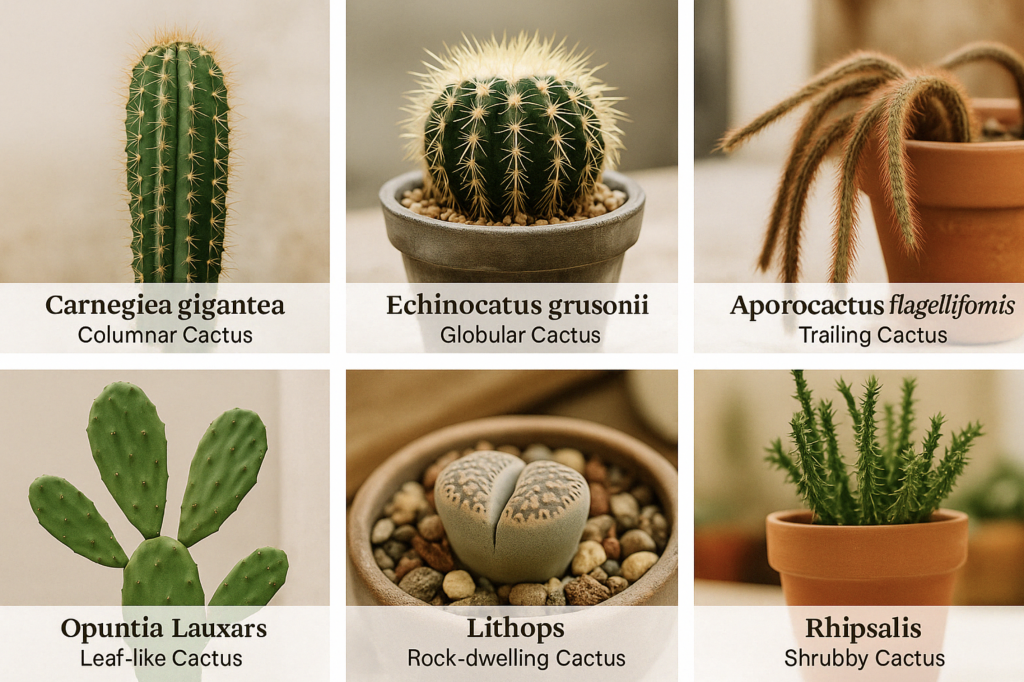
Quick Reference: Cactus Types at a Glance
| Type | Visual Style | Use Case | Difficulty |
| Columnar | Tall, sculptural | Living room floor plant | Easy–Medium |
| Globular (Ball) | Small, round | Desks, shelves, windowsills | Easy |
| Trailing | Hanging, draping | Baskets, vertical gardens | Medium |
| Leaf-like | Flat pads, flowers | Indoor bloom displays | Medium–Hard |
| Rock-dwelling | Micro, compact | Mini pots, terrariums | Medium–Hard |
| Shrubby | Bush-like | Outdoor or dry gardens | Medium |
How to Grow, Style, and Propagate Low-Maintenance Cacti for Healing, Minimalist Living
Cactus plants are nature’s most resilient survivors—thriving on sunlight, storing their own water, and demanding very little attention. For beginners, they’re the ideal low-maintenance houseplant. For design lovers, they’re sculptural statements and mood-lifting decor.
Whether you're greening up a city apartment, crafting a desert nook on your windowsill, or styling a dry garden outdoors, cacti bring beauty, calm, and a story of endurance.
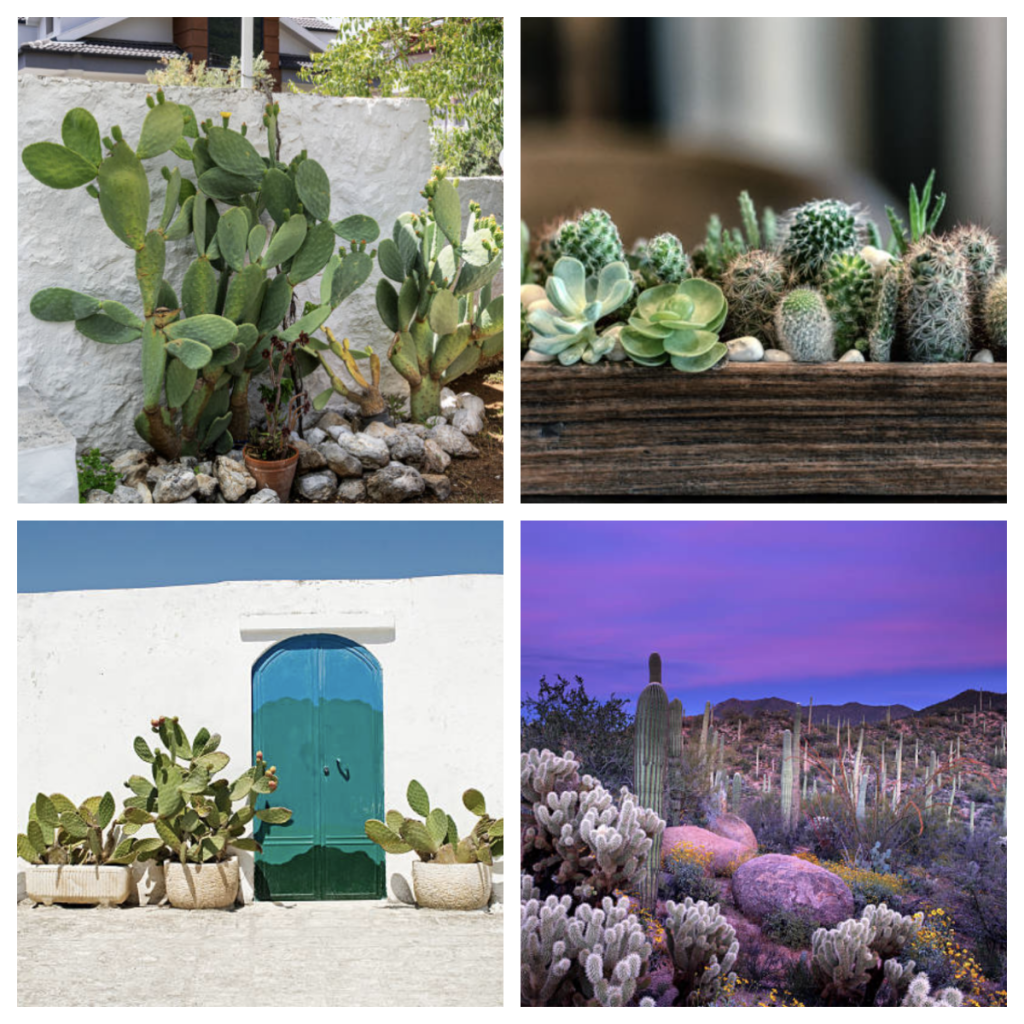
Basic Cactus Care
Keywords: cactus care, indoor cactus tips, low-maintenance plants
| Element | Recommendation |
| Light | Bright direct sun, 6+ hours/day |
| Water | Deeply every 2–4 weeks; allow full drying in between |
| Soil | Sandy, fast-draining cactus mix |
| Pot | Terracotta pots with drainage holes |
| Humidity | Low; avoid damp air or humidifiers |
| Temperature | 65–85°F (18–29°C); avoid frost |
Tip: If unsure, don’t water. Cactus roots hate soggy soil.
Bonus Tips for Choosing the Right Cactus
- Light Lovers: All cactus types need sunlight, but trailing or leafy cacti can handle partial shade.
- Containers Matter: Use terracotta or unglazed pots with drainage holes.
- Safety First: For spiny varieties, always handle with gloves or tongs!
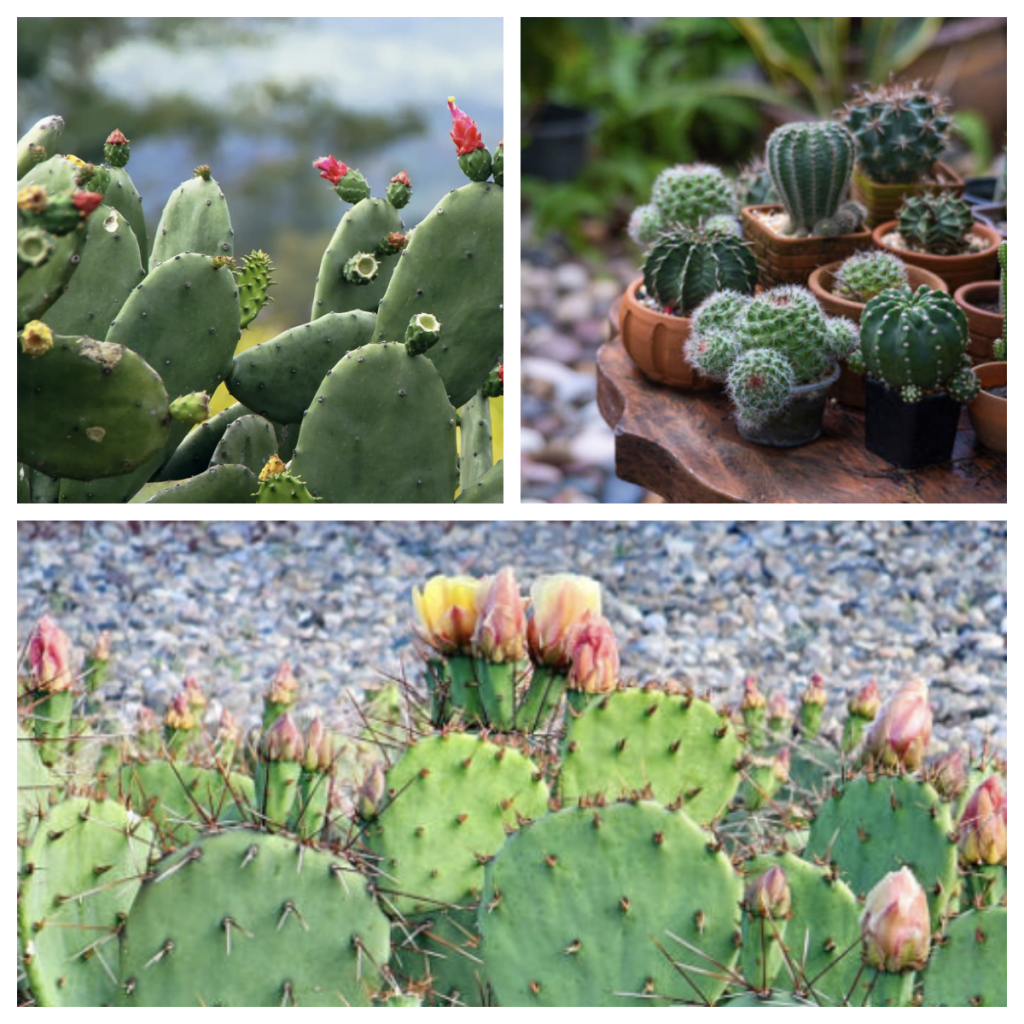
Propagation & Growth Tips
Keywords: cactus propagation, how to grow cactus
- Offsets: Separate pups from the base once they form roots
- Cuttings: Let pad cuttings dry for 1–2 days before planting
- Seeds: Slow but rewarding; keep warm and lightly moist
Always wear gloves or use tongs when handling spiny varieties.
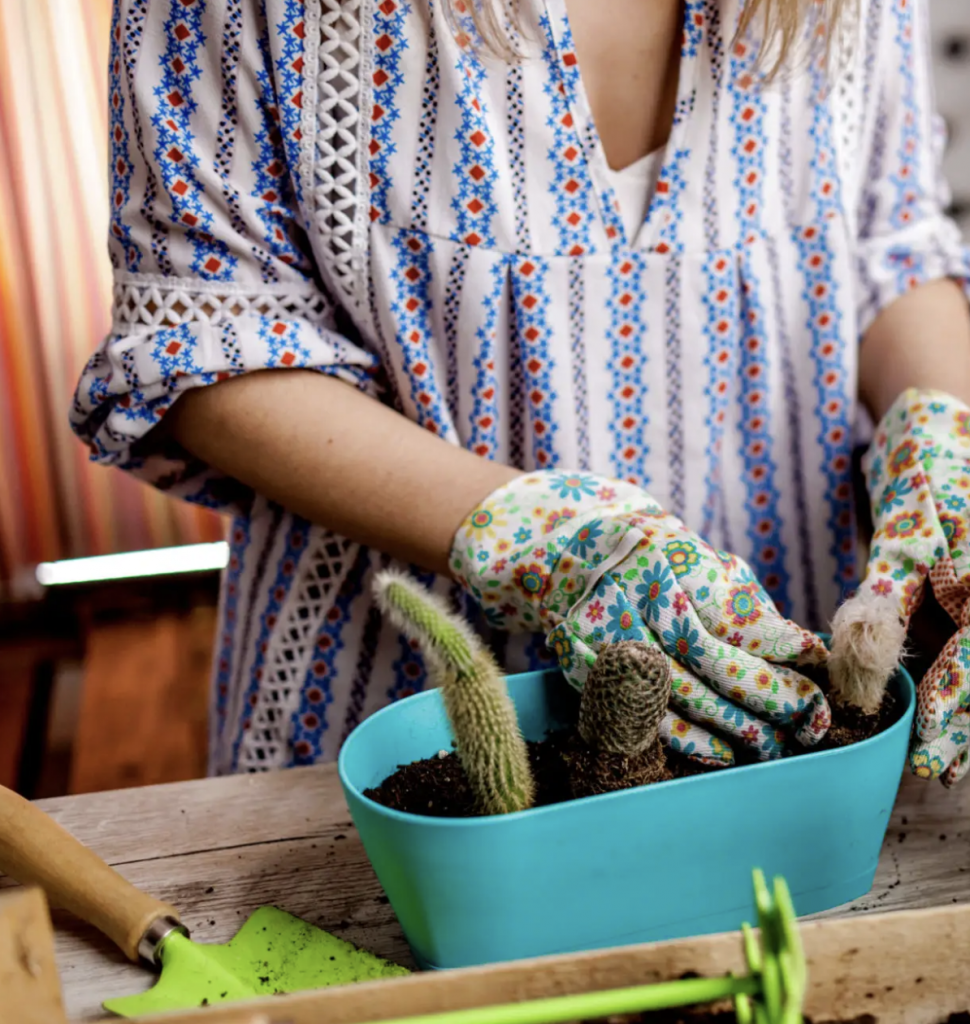
Cactus Symbolism & Energy
Keywords: cactus meaning, emotional benefits of houseplants
Cacti symbolize endurance, protection, and peace. They’re often placed in workspaces or entryways to reduce stress and enhance calm.
As “living sculptures,” they invite mindfulness and stillness—ideal for modern lives full of noise.
Styling Ideas for Every Space
Keywords: cactus decor ideas, cactus home styling
- Desert Zen: Mix white gravel, driftwood, and a tall cactus for a mindful vibe
- Small-Space Style: Line up 3 colorful cacti in mini terracotta pots
- Modern Boho: Pair trailing cactus in a macrame hanger near a sunny window
- Wellness Corner: Combine cactus with lavender or aloe for a healing look
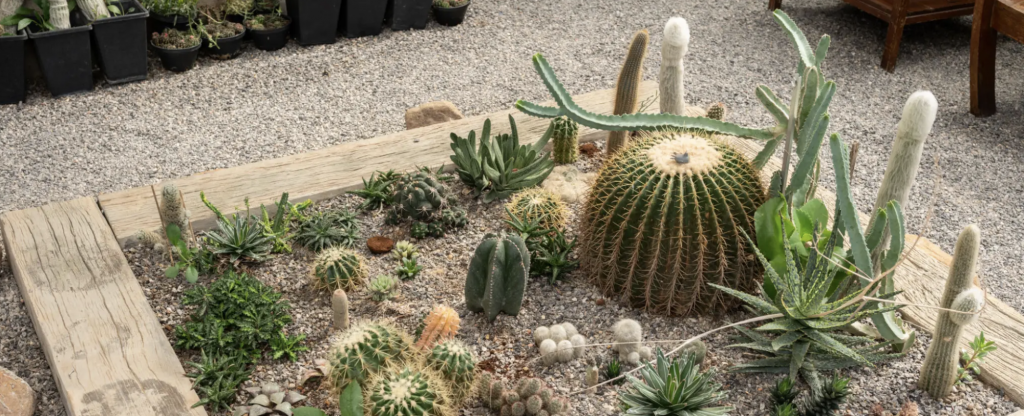
Final Thought
Cactus care is about more than plant survival—it’s a design choice and a gentle reminder to thrive quietly. In a world that races, your cactus stays grounded.

